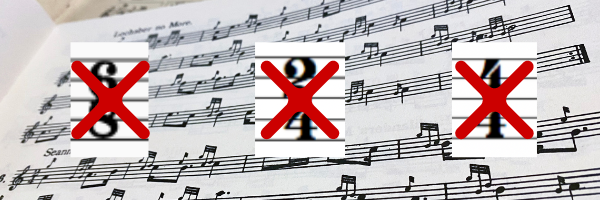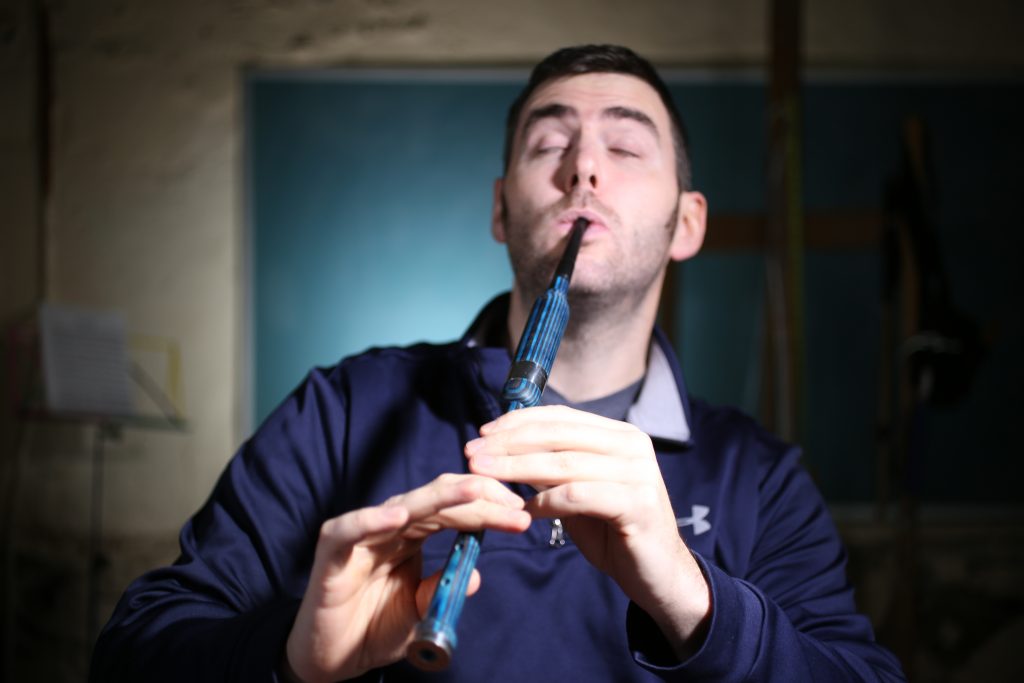What's the Time Signature? Who cares!

Time signatures are something that many beginning pipers (and musicians of any kind) get pretty hung up on. Simple time, common time, compound time – those couple of stacked numbers at the start of any piece of music can be a lot to take in.
But what are they, and what are they for?
What's the difference, for example, between 6/8 time and 3/4 time?
My answer is... who cares?
Why do we focus on time signatures at all? If you think of rhythm as a map, the time signature is kind of like a compass on a map that gives us some of this information, which is helpful for us to use. But at the end of the day, it's just a way of 'officially' recording how to navigate rhythm – it's not in and of itself an important thing to focus on.
What is important is to understand what a time signature is, and what it helps us to do...
Let's recap three dimensions of rhythm:
- How many beats per musical idea? Usually, these will come in either twos or threes.
- How are those beats divided up?
- Is the 'groove' straight or swung? This is also known as 'round' or 'cut and held' – does the tune sound 'straight' and even, or stilted and/or jazzy?
When you first look at a tune, the best thing you can do is to clap or sightread the rhythm.
99% of all bagpipe music exists inside these three dimensions.
Music, and especially bagpipe music, tends to be made up of "conversing" musical ideas. These ideas are almost always exactly the same number of beats. Identifying the number of beats per bar and/or phrase is the first vital parameter when it comes to understanding the rhythmic structure of a tune.
Next, in almost all music, we'll be able to hear a particular number of divisions of each beat. Usually, these have a "1-e-and-a 2-e-and-a" (4 beat-divisions) feel, or "1-and-a 2-and-a" (3 divisions) type feel.
And finally, beats are subdivided either as "straight", which subdivides beats evenly and with all divisions the same duration, or "swing", which subdivides beats with a long-short-long-short pattern. (Jazz music is famous for this).
Here is a chart of all common bagpipe tunes, with their rhythmic structure broken down.
| Tune Type | Beats per bar | Divisions of Beat | Straight/Swing | Approx "Full Performance Tempo" |
| 4/4 March | 4 | 4 | Swing | 80bpm |
| 2/4 March | 2 | 4 | Swing | 65bpm |
| Retreat March (3/4) | 3 | 4 | Swing | 80bpm |
| 6/8 March | 2 | 3 | Swing | 75bpm |
| 9/8 March | 3 | 3 | Swing | 75bpm |
| Strathspey | 4 | 2 | Swing | 120bpm |
| Reel | 2 | 4 | Swing OR Straight | 80bpm |
| Jig | 2 | 3 | Straight | 120bpm |
| Hornpipe | 2 | 4 | Swing OR Straight | 80bpm |
Can you see how the rhythmic makeup of these tunes defines them? A few variables come together to create all of our different rhythmic structures.
So the next time someone asks whether you know what time signature a tune is, remember to tell them 'who cares', and then you can point them to this table to teach them all about the three dimensions of rhythm instead.
Take Action
Explore rhythm for bagpipers in more detail as part of our Rhythm for Bagpipers course, which delves into time signatures, as well as all the fundamental aspects of rhythm that you'll need to know to master this fundamental piping skill.
Or, are you ready to take your rhythm training to the next level? Our snare drumming program is now live and waiting for you to get started!






Responses